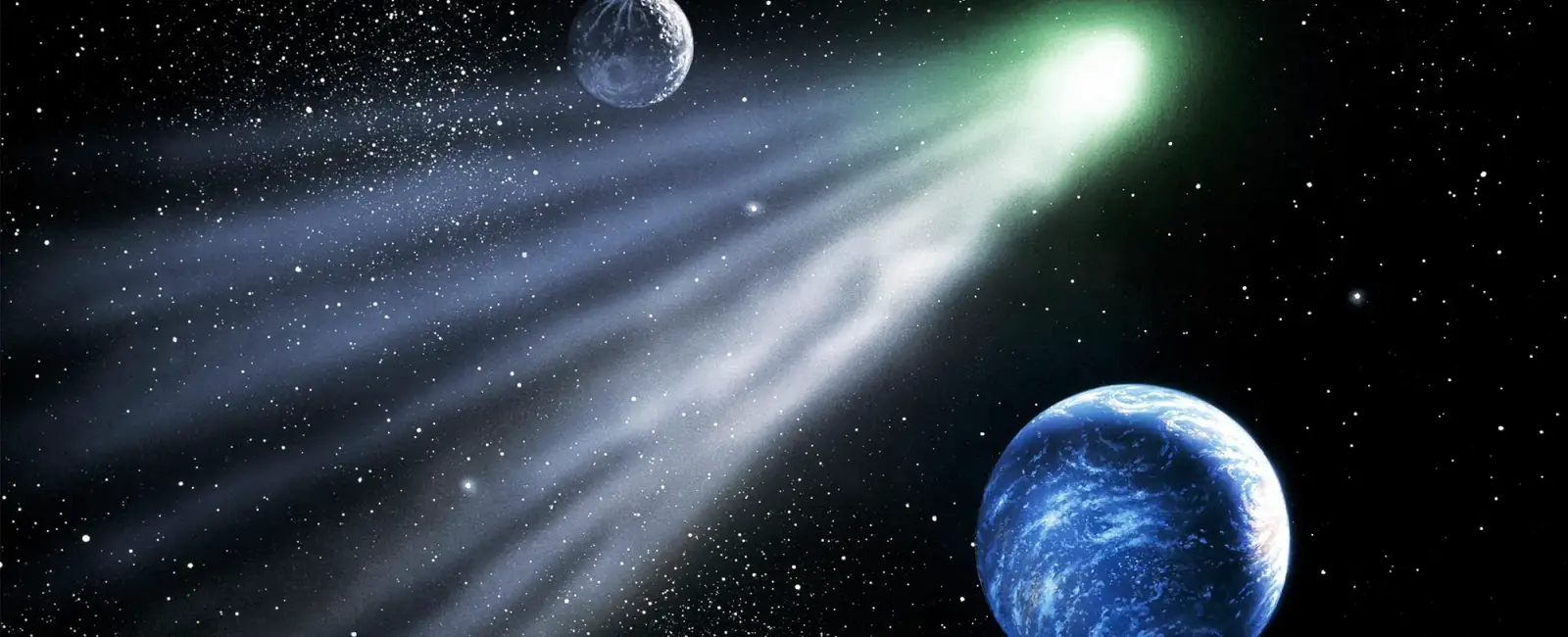Comets are cosmic snowballs they make sweeping orbits around the sun and are composed of gas and dust

Comets: Cosmic Snowballs Sweeping Around the Sun

Comets, those intriguing objects that grace our night sky, have captivated humans for centuries. With their majestic tails and mysterious nature, comets have long been a source of fascination and curiosity. But what exactly are these celestial wonders?
Comets are often compared to cosmic snowballs, and for a good reason. They consist of gas, dust, ice, and rocky material, making them similar to a dirty snowball or an icy mudball. While snowflakes are formed from water vapor freezing in the Earth’s atmosphere, comets are formed beyond Neptune, where the cold temperatures allow various compounds to freeze. These compounds include water, carbon dioxide, methane, and ammonia, among others.

Comets travel through space in sweeping orbits around the Sun, with some taking hundreds or even thousands of years to complete a single revolution. Astronomers classify comets into two primary groups: short-period comets and long-period comets. Short-period comets have orbits that last less than 200 years, while long-period comets can take thousands or even millions of years to complete an orbit.
When comets venture closer to the Sun, the heat causes their icy nucleus to vaporize, creating a glowing coma around the nucleus. The coma is the bright, fuzzy cloud surrounding the core of the comet. Additionally, the Sun’s radiation exerts a pressure that pushes against the coma, causing the formation of a magnificent tail that can extend for millions of kilometers. This tail can consist of dust and charged particles that reflect sunlight, creating an ethereal display visible to us on Earth.
Scientists study comets to gain insights into the early Solar System’s formation. Comets are like frozen time capsules, preserving material from the early stages when the planets were still developing. By analyzing the composition of comets, scientists can determine the conditions and chemical makeup of the primordial Solar System.
Comets have played significant roles in shaping our understanding of the universe. They have been associated with prophetic events, inspiring awe and wonder among civilizations throughout history. In modern times, space missions have been sent to study comets up close, such as NASA’s Stardust and Rosetta missions. These missions have provided invaluable data that has expanded our knowledge of comets and their role in the Solar System.
To learn more about comets and their significance, visit NASA’s official website. There, you can find a wealth of information, including images, videos, and scientific discoveries related to these intriguing celestial objects.
In conclusion, comets are cosmic snowballs that make sweeping orbits around the Sun. Composed of gas, dust, ice, and rocky material, they offer a glimpse into the early stages of our Solar System. Their enchanting tails and glowing comas have captured human imagination for centuries, making them a subject of continuous research and exploration.
Related Posts
Quick Links
Legal Stuff

